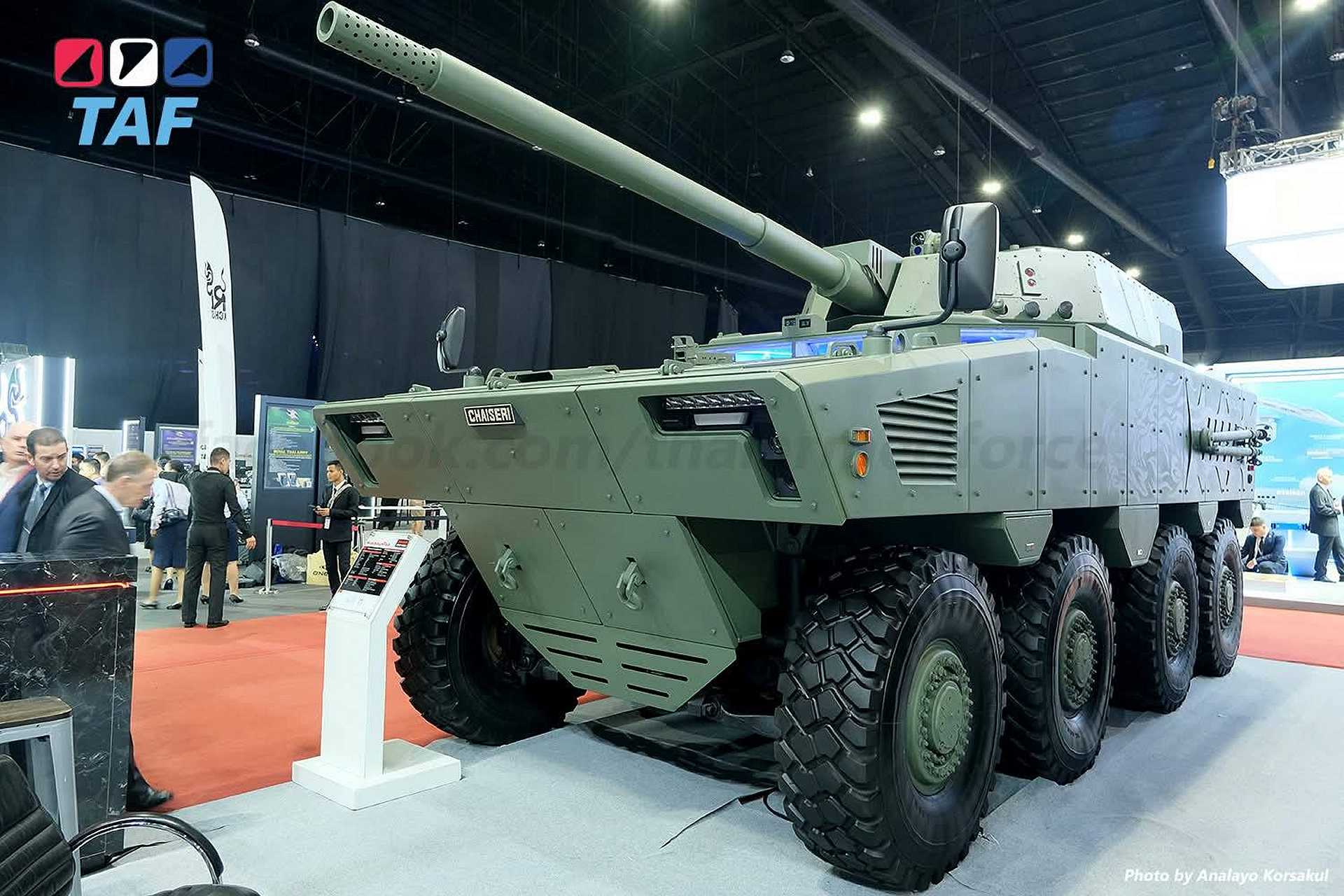Thai-based company Chaiseri introduced its Guardian-T 8×8 concept vehicle at the Defense and Security 2025 exhibition in Thailand, showcasing a new direct-fire support platform based on the Royal Thai Navy Marine Corps amphibious chassis. The design matters for Thailand’s defense industry because it signals a push toward export-ready armored systems with greater mobility and modular firepower.
The Thai-based company Chaiseri used the opening days of Defense and Security 2025 in Bangkok to pull the wraps off its Guardian-T concept, a medium-weight 8×8 armored vehicle designed for direct-fire support roles. Company officials described the design as an evolution of the amphibious 8×8 already in service with the Royal Thai Navy Marine Corps, noting that the prototype remains in an early development phase but is being shaped for flexible integration of weapons, sensors, and protection packages aimed at both domestic requirements and international customers.
Follow Army Recognition on Google News at this link
Thai-based Company Chaiseri unveils its Guardian-T 8×8 armored vehicle concept featuring a 105mm turret at Defense and Security 2025 in Bangkok, Thailand. (Picture source: TAF Facebook account)
The Guardian-T is introduced as a mock-up to demonstrate core design concepts and solicit military stakeholder feedback. Its welded monocoque hull, a single-shell structure, provides strength and blast resistance. Chaiseri states the platform meets STANAG 4569 Level 2 protection, resisting defined ballistic and mine threats, and can be scaled to Level 3. This ensures survivability against 7.62 mm armor-piercing projectiles and larger explosive charges. The hull’s shape and protection layout allow for future modular armor or internal spall liners that reduce injury from impact fragments.
With a combat weight of about 25 metric tons, the Guardian-T carries six personnel, including the driver. It is powered by a diesel engine paired with an automatic transmission system. The vehicle can reach a top speed of 110 kilometers per hour and an operational range of 800 kilometers. The drivetrain includes independent suspension and permanent 8×8 drive. This setup supports high off-road mobility and stability across varied terrain. While ground clearance and approach angles have not yet been detailed, the platform inherits many design characteristics from the amphibious model used by the Royal Thai Marines.
Its main armament is a 105 mm self-loading cannon mounted in a remotely operated turret. While the specific turret model has not been disclosed, the design includes anti-tank guided missile launchers, enabling both kinetic and stand-off engagement capability. The turret ring has been engineered for compatibility with a variety of weapon systems, allowing integration of turret modules from French or Israeli suppliers, depending on the end-user’s operational preferences and defense partnerships.
Chaiseri requires foreign turret manufacturers to agree to local production or assembly in Thailand and to transfer all maintenance and support knowledge to local personnel. “Any turret selected for the Guardian-T must be produced or assembled in Thailand, with complete technology transfer to Chaiseri for internal maintenance and upgrades. This ensures we can maintain full operational readiness and sovereignty over the system lifecycle,” said Mr. Krit Kulhiran, lead program executive at Chaiseri.
Beyond its main weapon system, the Guardian-T integrates with various onboard systems, including a tactical communications suite for secure exchange, GPS with digital compass for navigation, night-vision driver camera for low-light visibility, automatic fire suppression to detect and extinguish fires, and a tire pressure monitoring system. Future options include a laser warning receiver and acoustic gunshot detection to enhance awareness and survivability under threat.
The Guardian-T remains in conceptual design as Chaiseri engages defense officials and procurement planners to refine the platform with operational feedback. Turret configuration and subsystems may change depending on mission profiles and customer needs, and the design features a flexible architecture that can be scaled or modified for direct-fire support, reconnaissance, or hybrid operations.
While not yet in prototype or production, the Guardian-T signals Thailand’s growing ambitions in armored vehicles. Building on successes like the First Win 4×4 and the AWAV amphibious vehicle, Chaiseri now targets the higher end of the wheeled combat vehicle market. If the Guardian-T reaches production, it could offer regional militaries a cost-effective alternative to pricier Western systems, with the added value of local support, modular design, and sovereign sustainment.











